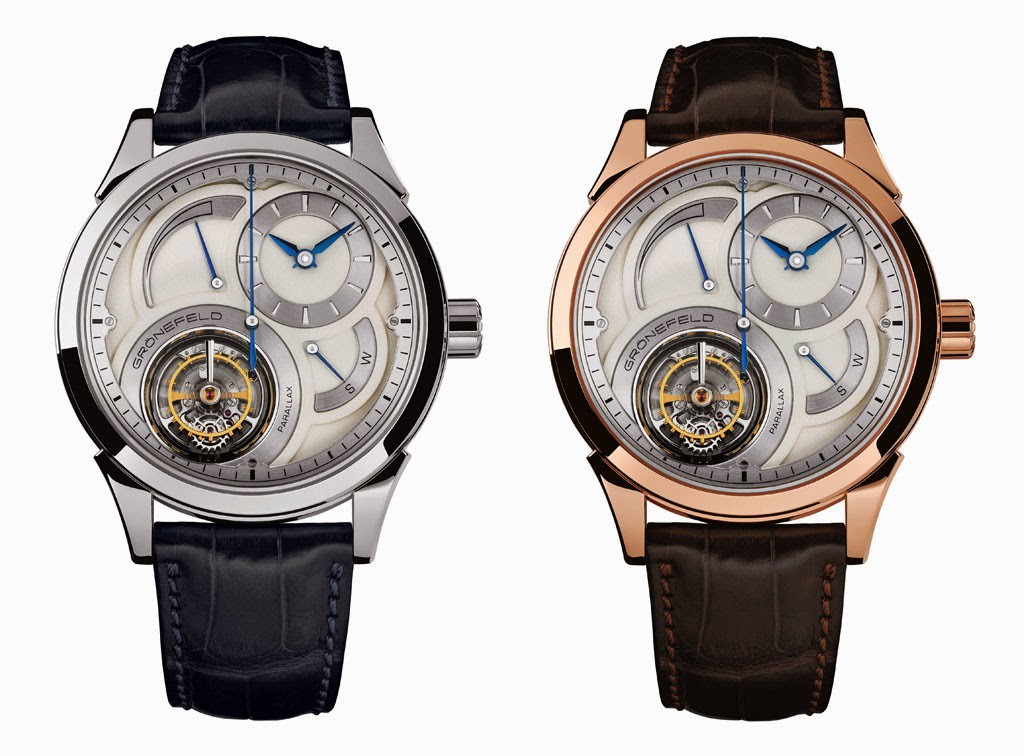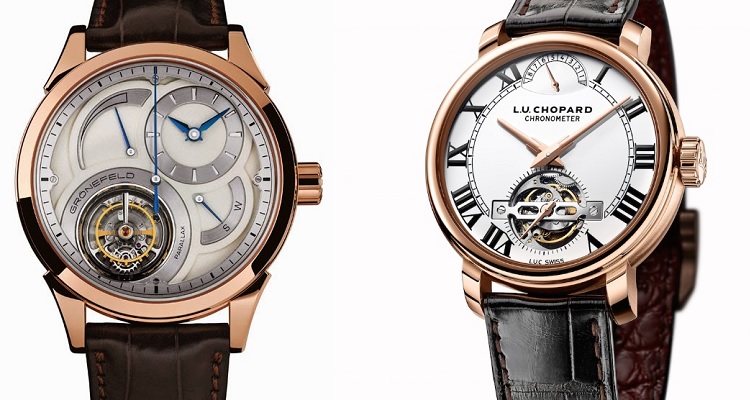
It’s a very clean design with big blue hands. The name for the watch is related to the precisions readability of the central seconds hand, thus, to make it as easy to read accurately as possible the seconds hand extends all the way to just inside the edge of the case itself. A fun little gadget this watch has is a device that will move the balance arm for the tourbillon around at the same rate as the seconds hand, so they are always parallel. The dial components are all made of solid silver and are then rhodium plated and polished to make the finish required of the piece and are then placed together.

The watch has a power reserve indicator between where 10 and 11 O’clock would be and the hour and minutes hands have been relocated on the dial to between 1 and 2 O’clock. Between 3 and 4 O’clock is a unique indicator that points to either an ’S’ or a ‘W’. This is because the watch has another unique feature to it. In order to prevent damage to the crown stem, the crown on the watch is pushed inwards rather than being pulled outwards. The hand indicates whether the crown is in the winding or the time setting position. When in the time setting position the tourbillon and seconds hand will return to the 12 O’clock position and then hack (stop running), ensuring the ultimate accuracy when setting the time. The power reserve of this piece is a solid 72 hours.

On this watch the tourbillon itself is housed within it’s own section of the dial. It’s suspended from one arm which moves around at the same rate as the seconds hand. Because of where it’s placed you get a very good view of the tornado doing its job as intended when originally designed by Abraham-Louis Breguet in the late 18th century. It also takes three days to hand finish every component of the tourbillon before it can be placed into the watch. To help with strength and aesthetics, the bridges of the watch are made of steel instead of steel and brass. This makes the movement more hardy, which is good considering the tourbillon is a fragile component. The Grönefeld is limited to 12 pieces made in stainless steel that retail for €134,250 excluding tax and 28 pieces in rose gold at a price of €137,450.

The decider is now upon us. It’s time to weigh up these two watches and see what they offer. First up is the Chopard which uses an in-house movement made by Chopard, a company which everyone knows as a producer of high quality timepieces. Also, the watch has a 9 day power reserve (so it’ll keep running even if the indicator reaches 0, so you still have time to wind it before it stops) and is a COSC certified chronometer.

Meanwhile the Grönefeld is a watch that uses some cool innovations to its advantage such as the crown that pushes inwards and the tourbillon that hacks when it reaches 12. It also won the top prize for tourbillon watches from the Grand Prix D’horlogerie De Genève last year.
What it doesn’t win is this round in the series. I feel that these two watches are so close in terms of technology and workmanship that it’s come down to persona taste. I feel that the Chopard has more character in its soul and more fire in its belly (9 days in fact). There’s nothing wrong with either watch technology wise and either is a worthwhile investment to wear with pride.
Choose either the 43mm Grönefeld or the 40mm Chopard and you’ll love the watch as if it were a member of the family for years to come. The Grönefeld deserves its own special recognition as WristReview’s go to tourbillon watch of choice, it is however not mine. For more info, please visit gronefeld.com & chopard.com
Stay tuned as there’s a load more watches still floating around out there just waiting to compete.
Pages: 1 2

HARLAN CHAPMAN-GREEN – CONTRIBUTING EDITOR
A keen bass guitar player, Harlan enjoys all the perks modern watchmaking technologies the industry has to offer. Although you might catch him sampling Omegas or the Rolex, Harlan loves all things haute horology, with his three favourite brands being A.Lange & Söhne, Breguet and Vacheron Constantin. He hopes to study timekeeping more in depth someday and will never be able to thank his father enough for introducing him to the industry. Read his articles here.

